#Medieval history
Explore tagged Tumblr posts
Text
And if you would like to know more about them may I suggest reading the works of Professor Ruth Karras as a starting point. Gender and sexuality in the middle ages is fascinating and so much more varied and interesting than people like the angry gamer lads there can imagine.
(I can start a tumblr for my current project I say. I can definitely stay on topic this time and not fall down special interest rabbit holes I say).
So. I’ve been laughing about this like all day and I need to talk about it. My gay ship just went canon in the most male power fantasy game of all time.

Kingdom Come Deliverance 2 recently released (I’ve been playing it, it’s good). It’s an RPG set in medieval Bohemia. You play as Henry, a blacksmith’s son. The first game, released back in 2018, starts with your village being burned to the ground and everyone either is killed or has to flee. The rest of that game is you trying to, among various things, deal with your trauma and get revenge. It’s a very well executed story in my opinion.
A notable character in the game is Lord Hans Capon, who was a real guy but the game version is a bit loosely based on him. Hans and Henry become rivals then friends. Their noble/peasant dynamic is reminiscent of Arthur and Merlin in BBC Merlin (though I would argue the class dynamics are far better executed and more nuanced). Like ten people including me decided to ship them.
The first game was a bit rough but overall good. It garnered a decent audience, including a notably large audience of straight white men who really like medieval history but not enough to know much about it beyond swords are cool. You get the picture.
The second game is announced. Those guys I mentioned are super excited!
Well. As it turns out there’s going to be a homosexual relationship in the game, according to an announcement made by the director at the end of January. Uh oh. W-well as long as it’s not the main character-
Cue release day, February 4th. IT IS!!!
HANS AND HENRY. It’s THEM! They have sex ON SCREEN. No nuance about it (though it’s important to note this is an option you have to CHOOSE).
The guys go crazy. KCD has gone woke they cry. And to make it worse there’s *gasp* a black man in a Bohemian court! DEI!



I can’t believe Warhorse Studios did it. I’m genuinely amazed. I have never been so vindicated in my life.
Everyone play this game for the love of god. The combat is tough but there’s plenty of guides online. It’s worth it I promise.
5K notes
·
View notes
Text
STORE UPDATE





All my Medieval Collection has been restocked AND added to! I'm so excited I might do a jig!
#hope you all like it!#medieval art#medieval#illuminated manuscript#medieval history#medieval meme#history meme#historyblr#medievalist
185 notes
·
View notes
Text

"There is one group for whom female roles were absolutely central: the Guglielmites. These were followers of a holy woman, Guglielma, who died in northern Italy in about 1281. She was believed to be (and possibly in reality actually was) the daughter of the king of Bohemia, thus a relative to several other very famous holy women (Elizabeth of Hungary, Agnes of Bohemia, and Margaret of Hungary). Following her death, it appears that those close to her—particularly a woman called Maifreda da Pirovano and a man called Andreas Saramita—came to believe that Guglielma had been the incarnation of the Holy Spirit, sent to the world in order to establish a new Church led by a female pope, and that following her death Guglielma would have a Second Coming, which would lead to the conversion of all non-Christians.
Here, alone of all the medieval heresies, an idea about specifically female spirituality stands center stage. The cult of Guglielma was in some respects much like other cults directed toward a local saint; Guglielma’s body was buried in the local monastery, for example. But Maifreda appears to have played a particularly central, and possibly quasi-sacerdotal, role in its devotions: distributing consecrated hosts, bestowing blessings, and having various people (including local lords and ladies) genuflect before her and kiss her hand.
Lady Sibilla Malconzato, very much involved in the sect, eventually reported to inquisitors that:
at Easter last past, Sister Maifreda da Pirovano made herself in the manner of a priest, and Sister Fiordebellina and Sister Agnesina and Andreas Saramita and Franceschino Malconzato had vestments, and Albertone da Novate and Felicino Carentano and Ottorino da Garbagnate had white mantles, and they prepared a table in the manner of an altar, and they had a chalice and other necessary things for saying mass; and the said Sister Maifreda said mass and held the Host and raised it up, and did all things around that mass in the manner done by other priests; and the said Andreas spoke the Gospel and the said Albertone spoke the Epistles.
This is perhaps the most direct account of a woman acting as a priest to be found anywhere in the medieval sources; it is interesting to note that even while Maifreda prepared the Eucharist, it was her male assistants who preached. The sect was, however, very small and secretive, and did not attract much wider participation (though it may have held some continuing attraction to the Visconti dukes of Milan, as part of their antipapal strategy)."
Arnold John H., "Heresy and Gender in the Middle Ages", in: Bennett Judith, Karras Ruth (eds.), The Oxford Handbook of Women and Gender in Medieval Europe
#history#women in history#women's history#historyedit#13th century#herstory#italy#italian history#guglielma#Maifreda da Pirovano#middle ages#medieval women#medieval history
35 notes
·
View notes
Text

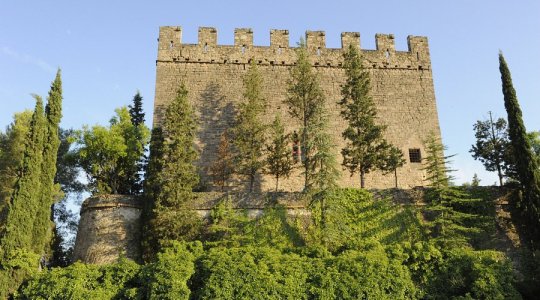



Balsareny Castle, Central Catalonia.
This Medieval castle was started in the year 951, with significant reforms in the 14th century. The chambers in the upper floor was restored in the 19th century.
The castle's building is explained in a local legend, according to which the castle is also called "The Castle of the Ninety Nine Chambers". The legend says that the Lord of Balsareny wanted to build a castle, but he didn't have enough people nor money to build it. He counted his means and thought over it, but he couldn't figure out a way until, desperate, he said "I would give anything to build my castle!". Hearing those words, the Devil appeared to him and offered him a deal: the Devil promised to build him a castle with 100 chambers, and in return the Lord would give him the soul of one of his vassals. The Lord accepted.
The Devil worked tirelessly, and in 6 days he had already built 99 chambers, one more and he would be finished. The Lord of Balsareny regretted having promised the soul of one of his vassalls, and decided to stop the deal. He placed an image of the Virgin Mary in the building. From then on, as the Devil worked and built the castle, the stones of parts of the castle already built flew back to the quarry. It didn't matter how much the Devil worked, because the building always stayed with 99 chambers.
The Devil continued working hard until he realized that there was divine intervention and he would never be able to finish. Then, he abandoned the work. To make sure that the Devil couldn't come back and ask for the vassal's soul, the Lord of Balsareny ordered to never build the 100th chamber. This way, the castle was never finished, and the deal wasn't fulfilled.
The statue of the Virgin is still worshipped in a 12th-century chapel built inside the castle.
Photos from Sortir amb nens, TripAdvisor, and Mama, què fem demà?. Historical information from Mapes del Patrimoni Cultural (Diputació de Barcelona). Legend from this article (page 64).
#balsareny#catalunya#llegendes#fotografia#legends#catalonia#legends and folklore#medieval#middle ages#history#historical#castles#castle#europe#historic#travel photography#travel#medieval history#wanderlust
37 notes
·
View notes
Text






Currently obsessed with these naturalistic illuminations from a manuscript of De Proprietatibus Rerum (1447, Bibliothèque d'Amiens, ms. 399). I just know that whoever commisioned this must have hired the nearest artist with an insane obsession for birds before proper birdwatching was even a thing. They hired the nearest De arte venandi cum avibus fanboy.



Like, the fact that despite the stylized drawings you can clearly tell that these are a corvus corax, a corvus cornix?! Hello?!?!
I love you, unknown french artist from the 15th century.
#Edit: a couple people made me rightfully notice that what I thought could be a carrion crow#in absence of better candidates#could actually be a jackdaw#and that either way it doesn't even match the text it is meant to represent as it was a total misinterpretation of it#just to let everyone know!#thank you irl french andreas maler#illuminated manuscripts#medieval manuscripts#ornithology#ravens#middle ages#corvids#medieval history#medieval art#history of art
6K notes
·
View notes
Text

#history#medieval history#ish?#oh i am Deeply in my feelings about this#people have always been people#(will always be people)#“i was his closest neighbor”#(they had not wanted him to go without flowers)#excuse me i just need to cry for real. thanks.
4K notes
·
View notes
Text

all RIGHT:
Why You're Writing Medieval (and Medieval-Coded) Women Wrong: A RANT
(Or, For the Love of God, People, Stop Pretending Victorian Style Gender Roles Applied to All of History)
This is a problem I see alllll over the place - I'll be reading a medieval-coded book and the women will be told they aren't allowed to fight or learn or work, that they are only supposed to get married, keep house and have babies, &c &c.
If I point this out ppl will be like "yes but there was misogyny back then! women were treated terribly!" and OK. Stop right there.
By & large, what we as a culture think of as misogyny & patriarchy is the expression prevalent in Victorian times - not medieval. (And NO, this is not me blaming Victorians for their theme park version of "medieval history". This is me blaming 21st century people for being ignorant & refusing to do their homework).
Yes, there was misogyny in medieval times, but 1) in many ways it was actually markedly less severe than Victorian misogyny, tyvm - and 2) it was of a quite different type. (Disclaimer: I am speaking specifically of Frankish, Western European medieval women rather than those in other parts of the world. This applies to a lesser extent in Byzantium and I am still learning about women in the medieval Islamic world.)
So, here are the 2 vital things to remember about women when writing medieval or medieval-coded societies
FIRST. Where in Victorian times the primary axes of prejudice were gender and race - so that a male labourer had more rights than a female of the higher classes, and a middle class white man would be treated with more respect than an African or Indian dignitary - In medieval times, the primary axis of prejudice was, overwhelmingly, class. Thus, Frankish crusader knights arguably felt more solidarity with their Muslim opponents of knightly status, than they did their own peasants. Faith and age were also medieval axes of prejudice - children and young people were exploited ruthlessly, sent into war or marriage at 15 (boys) or 12 (girls). Gender was less important.
What this meant was that a medieval woman could expect - indeed demand - to be treated more or less the same way the men of her class were. Where no ancient legal obstacle existed, such as Salic law, a king's daughter could and did expect to rule, even after marriage.
Women of the knightly class could & did arm & fight - something that required a MASSIVE outlay of money, which was obviously at their discretion & disposal. See: Sichelgaita, Isabel de Conches, the unnamed women fighting in armour as knights during the Third Crusade, as recorded by Muslim chroniclers.
Tolkien's Eowyn is a great example of this medieval attitude to class trumping race: complaining that she's being told not to fight, she stresses her class: "I am of the house of Eorl & not a serving woman". She claims her rights, not as a woman, but as a member of the warrior class and the ruling family. Similarly in Renaissance Venice a doge protested the practice which saw 80% of noble women locked into convents for life: if these had been men they would have been "born to command & govern the world". Their class ought to have exempted them from discrimination on the basis of sex.
So, tip #1 for writing medieval women: remember that their class always outweighed their gender. They might be subordinate to the men within their own class, but not to those below.
SECOND. Whereas Victorians saw women's highest calling as marriage & children - the "angel in the house" ennobling & improving their men on a spiritual but rarely practical level - Medievals by contrast prized virginity/celibacy above marriage, seeing it as a way for women to transcend their sex. Often as nuns, saints, mystics; sometimes as warriors, queens, & ladies; always as businesswomen & merchants, women could & did forge their own paths in life
When Elizabeth I claimed to have "the heart & stomach of a king" & adopted the persona of the virgin queen, this was the norm she appealed to. Women could do things; they just had to prove they were Not Like Other Girls. By Elizabeth's time things were already changing: it was the Reformation that switched the ideal to marriage, & the Enlightenment that divorced femininity from reason, aggression & public life.
For more on this topic, read Katherine Hager's article "Endowed With Manly Courage: Medieval Perceptions of Women in Combat" on women who transcended gender to occupy a liminal space as warrior/virgin/saint.
So, tip #2: remember that for medieval women, wife and mother wasn't the ideal, virgin saint was the ideal. By proving yourself "not like other girls" you could gain significant autonomy & freedom.
Finally a bonus tip: if writing about medieval women, be sure to read writing on women's issues from the time so as to understand the terms in which these women spoke about & defended their ambitions. Start with Christine de Pisan.
I learned all this doing the reading for WATCHERS OF OUTREMER, my series of historical fantasy novels set in the medieval crusader states, which were dominated by strong medieval women! Book 5, THE HOUSE OF MOURNING (forthcoming 2023) will focus, to a greater extent than any other novel I've ever yet read or written, on the experience of women during the crusades - as warriors, captives, and political leaders. I can't wait to share it with you all!
#watchers of outremer#medieval history#the lady of kingdoms#the house of mourning#writing#writing fantasy#female characters#medieval women#eowyn#the lord of the rings#lotr#history#historical fiction#fantasy#writing tip#writing advice
30K notes
·
View notes
Text


Medieval heart-shaped music book, circa 1460-1477.
National library of France.
#beauty#oddities#antiques#middle ages#medieval history#curiosities#medieval art#european culture#french culture
1K notes
·
View notes
Text
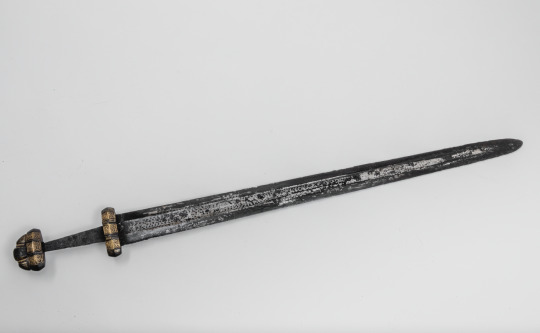

Carolingian sword uncovered in Dendermonde, Belgium, dated 750-850 AD
from the Royal Military Museum, Brussels
1K notes
·
View notes
Text

Fun fact but according to historians, tamagotchi were a popular commodity for noble ladies in the 14th century
#my source is that i made it the fuck up#medieval art#medieval history#medievalcore#illuminated manuscript#medieval#renaissance#fantasy art#history meme
12K notes
·
View notes
Text

I started reading Roland Betancourt's Byzantine Intersectionality because it has a chapter on transwomen, but it turns out that the book is heavily focused on transmasculinity and race in the Byzantine world.
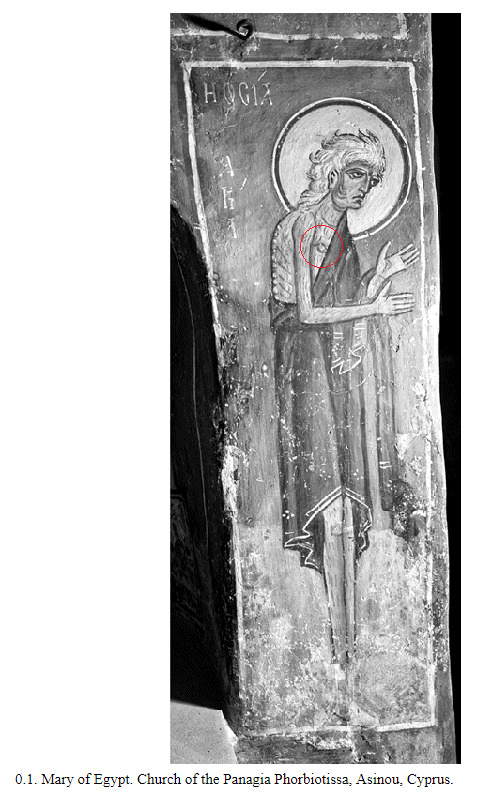
Specifically I wanted to show you this discussion on artistic representation of top surgery and the likelihood that this actually represents top surgery.
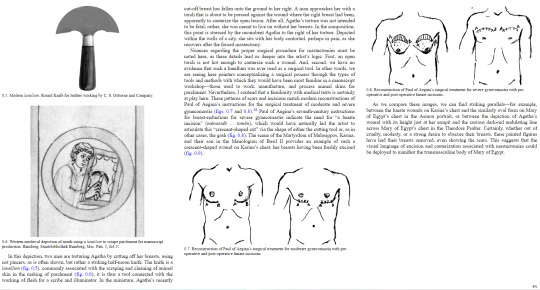
Anyway this is really fucking cool
5K notes
·
View notes
Text
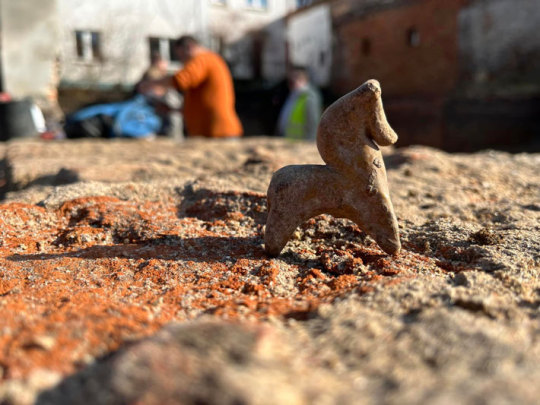
Medieval Toy Unearthed in Poland
A 800-year-old horse figurine was found during an excavation conducted as part of the construction of a new fire station in Toruń, a medieval town on the Vistula River in north-central Poland. The small clay horse was glazed and has a hole in its underside. Researchers think a stick may have fit into the hole so that playing children could pretend to make the horse gallop or use it as a puppet.
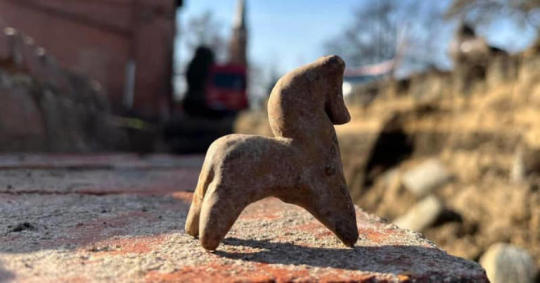
#Medieval Toy Unearthed in Poland#A 800-year-old horse figurine#Toruń#ancient artifacts#archeology#archeolgst#history#history news#ancient history#ancient culture#ancient civilizations#medieval history
1K notes
·
View notes
Text
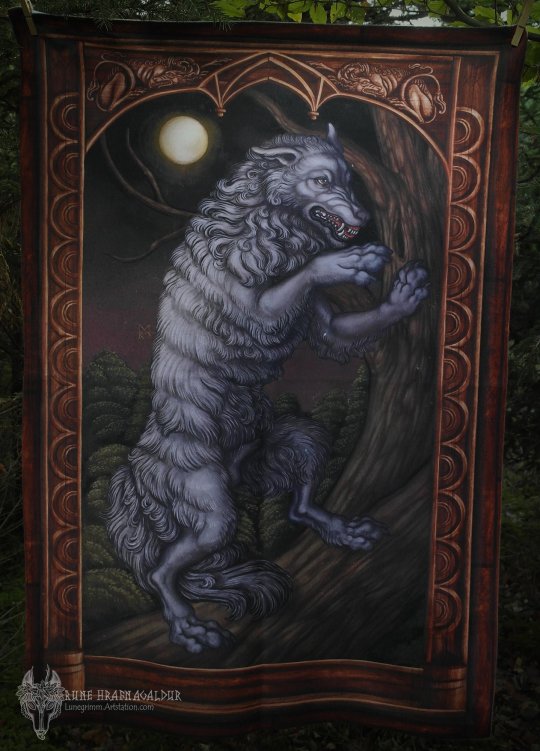
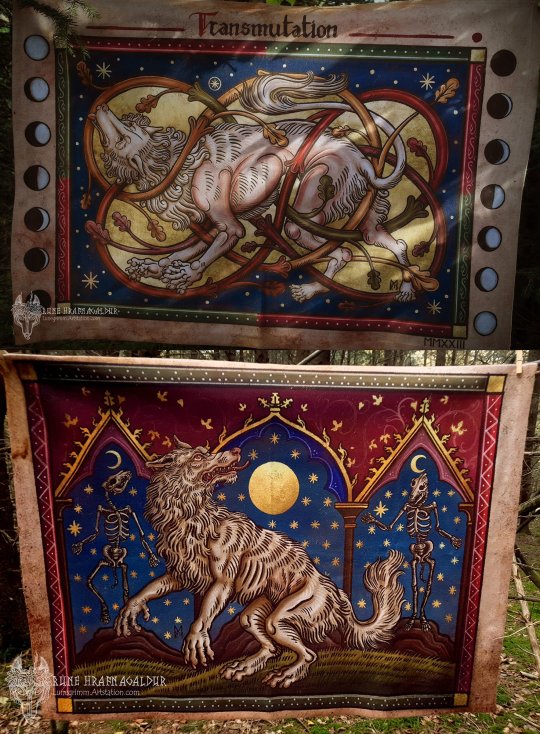
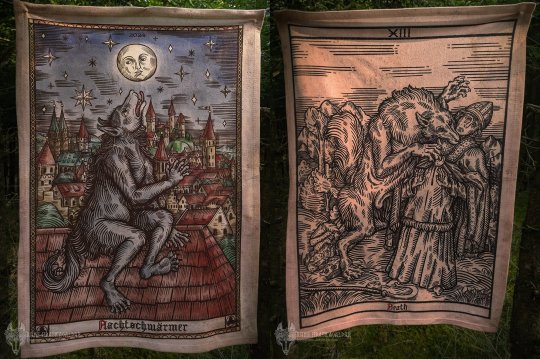

The time has finally come! The werewolf themed tapestry designs are available for pre-order once more! Joined by a pair of witches making for 4 new designs!
#WerewolfWednesday
#art#artists on tumblr#digitalart#medievalart#lunegrimmart#werewolf wednesday#medieval#werewolf#werewolves#wolf art#werewolf transformation#werewolf by night#werewolfwednesday#halloween#creature#lycanthrope#fantasy#fantasy art#medieval art#medieval manuscripts#medieval history#spooktober#spookyseason#halloween art#halloween vibes#furry#anthro#skeleton#manuscript#woodcut
436 notes
·
View notes
Text
"As far as we know, Ende was a Spanish illustrator who lived in the late 10th century and is regarded as the first female European artist to be recorded. She spent a portion of her life at San Salvador de Tábara Monastery in Tábara, Kingdom of León in Medieval Spain. According to the research of John Williams, one of the most eminent experts in Spanish medieval art, Ende may not have been a nun but rather belonged to a group of noble women from León who, during those years, rejected both convent life and instead managed their wealth and in a sense decided to go their way.
The Tabara scriptorium, which generated some of the Spanish Middle Ages’ most significant codices, was a cultural lighthouse at the time. Ende felt tremendously at ease working and living at Tábara Monastery, according to her illuminated manuscripts. Above all, it brought Ende closer to the dominant cultural movement of the day, recognizing the need to preserve sacred passages and everlasting images, working for her faith and herself."

#ende#history#women in history#women's history#10th century#female painters#female artists#spain#spanish history#middle ages#medieval history#medieval#medieval women
444 notes
·
View notes
